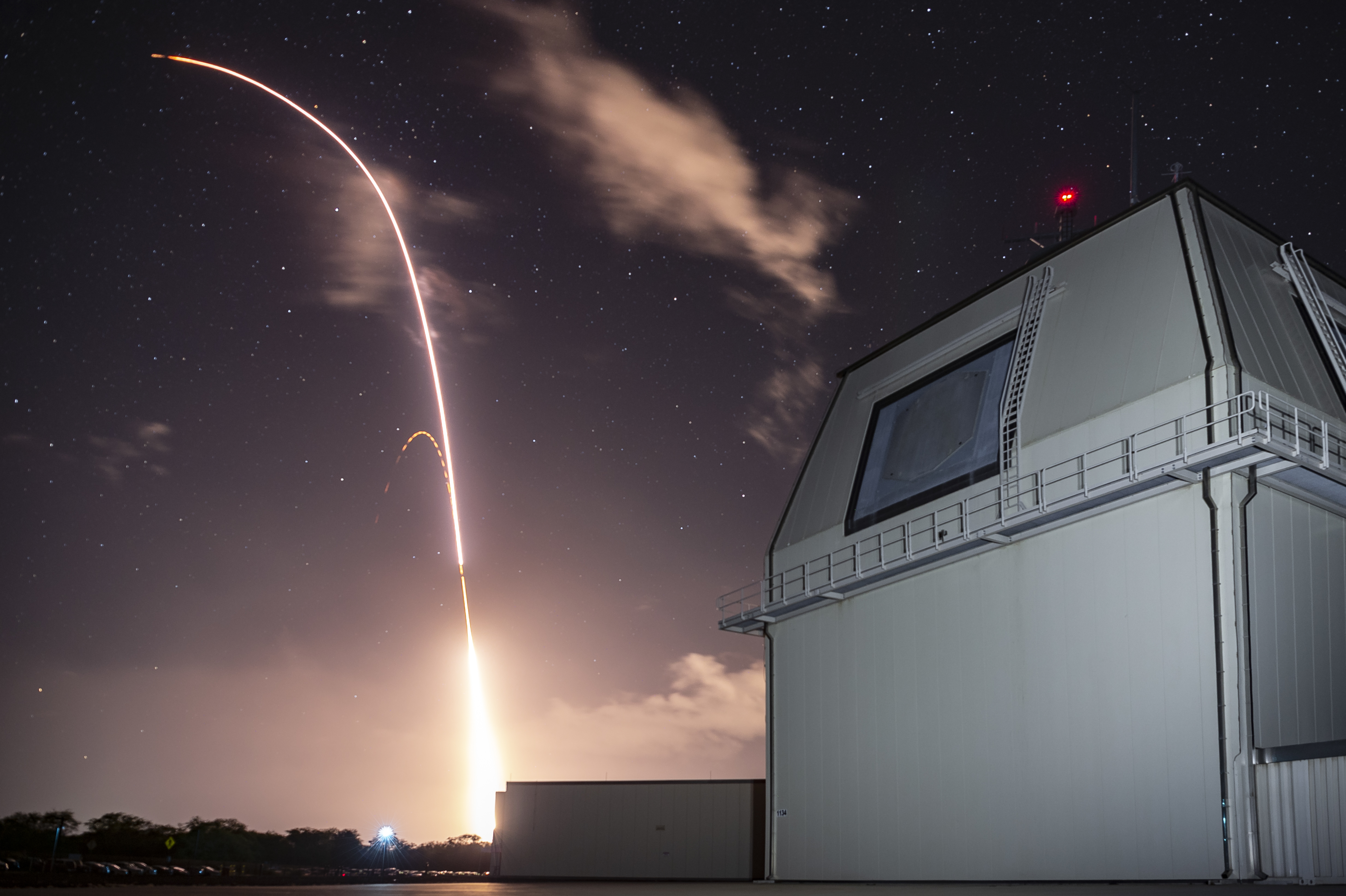
Building an Aegis Ashore facility on Guam would relieve three guided-missile destroyers from missile defense work and make them available for Navy tasking, the head of U.S. Indo-Pacific Command said Thursday.
Speaking at a virtual event hosted by the American Enterprise Institute, Adm. Phil Davidson made the case for building a homeland missile defense system on Guam, which he has said is his top priority, to protect the U.S. territory from Chinese missiles.
“The Guam defense system brings the same ability to protect Guam and the system itself as the three DDGs it would otherwise take to carry out the mission,” Davidson said. “We need to free up those guided-missile destroyers, who have multi-mission capability to detect threats and finish threats under the sea, on the sea and above the sea, so that they can move with a mobile and maneuverable naval forces that they were designed to protect and provide their ballistic missile defense.”
The Aegis Ashore system pairs the same radar found on the Arleigh Burke-class guided-missile destroyers along with a vertical launch system in a ground-based station.
The 360-degree defense system for Guam appeared on INDOPACOM’s list of investment priorities for both Fiscal Year 2021 and Fiscal Year 2022. USNI News recently reported that INDOPACOM is seeking $4.68 billion in FY 2022 for the recently established Pacific Deterrence Initiative, which Congress created to address a Pentagon strategy focusing on the military threat from China. The investment blueprint calls for $22.69 billion from FY 2023 through FY 2027 for INDOPACOM to achieve its goals.
“It’s return on investment,” Davidson said when arguing for the missile defense system.
“For the cost it takes to build that facility and flesh it out, I free up at least three ships in conflict and probably more ships in crisis. You know, in the deterrence phase they keep up a rotation and do all that kind of stuff going forward,” he added, referring to the oft-cited notion that it takes three ships total to keep one deployed forward due to the cycle for maintenance, training and operations.
The INDOPACOM chief emphasized that Guam’s current use of the Army’s Terminal High Altitude Area Defense (THAAD) system paired with an Aegis destroyer is not sufficient to address the threat posed by China.
“It doesn’t provide for a 360-degree defense necessarily,” he said. “It’s really designed to defend against a rogue shot from North Korea.”
Davidson pointed to China’s submarines and surface ships circumnavigating the Northern Mariana Islands and Guam, arguing these actions show that China’s ballistic missiles, cruise missiles and potential anti-ship ballistic missiles pose “a 360-degree threat” to Guam.
“We must evolve the critical defense of our people, our platforms and our posture initiatives, and it begins in Guam. Now, a highly capable, fully adaptable and proven system like Aegis – established in a fixed location like Guam – will deliver persistent, 360-degree integrated air and missile defense from the second island chain,” he said.
“In addition to defending U.S. citizens and American soil, this Guam defense system will also be capable of conducting the full spectrum of the detect-to-engage sequence, the sensing, the networking and the delivery of fires to support our maneuver. And that is indeed key to our joint force integration.”
Davidson noted that Aegis is a capability that already exists – it’s on the Navy’s ships and ashore in Europe, and other nations are also purchasing the system. He reasoned that building a missile defense system on Guam sends a message to other countries in the Indo-Pacific region.
“That posture – that assurance of our allies and partners that we’re here to stay and the deterrence capability that signals we’re not going to let Guam go without a fight – is critically important,” he said.
“We’re going to have to be able to fight for it, and missile defense in the region is critical,” Davidson continued.
“And our allies and partners – who are increasing their investments in their defense in the region – recognize the same thing for their territories.”





